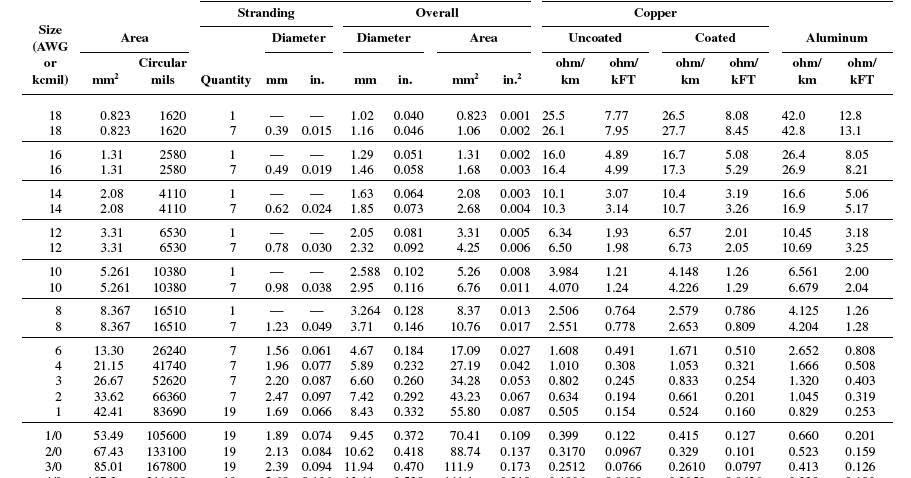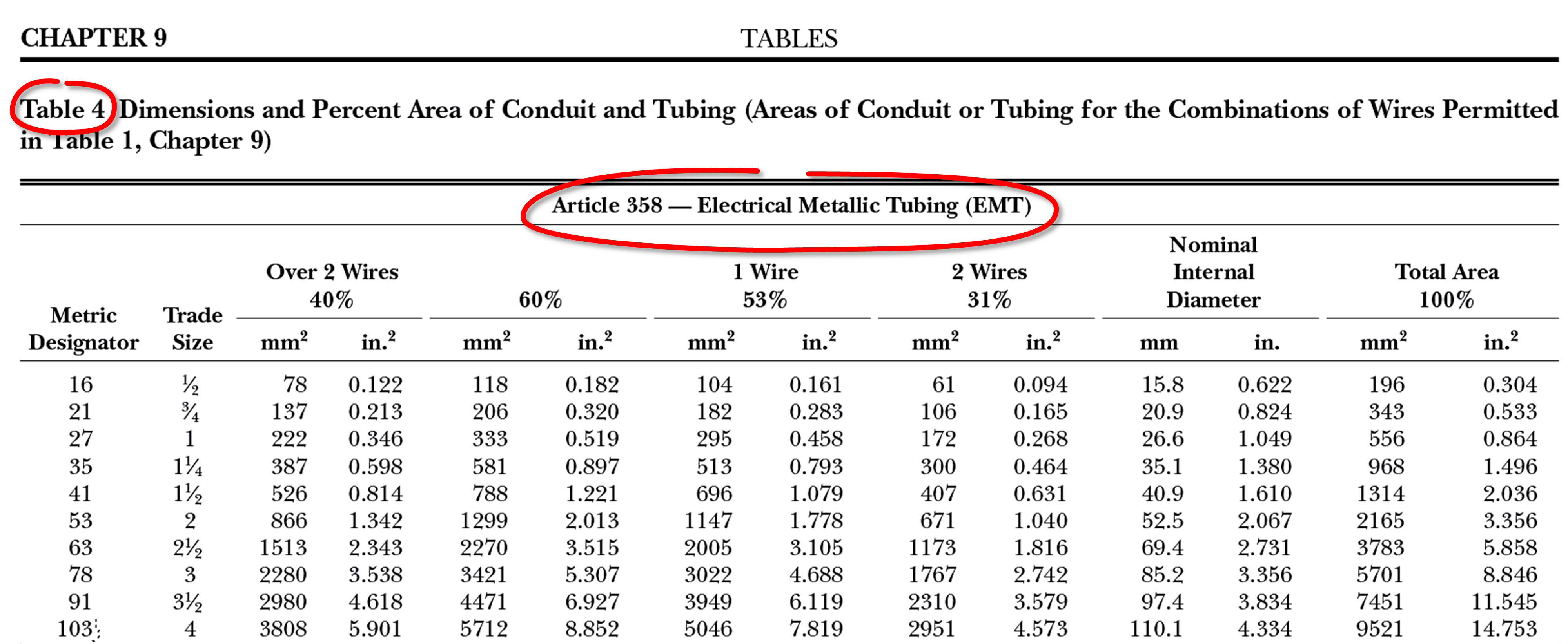Chapter 9 Table 8 Nec
Are you familiar with Chapter 9 Table 8 NEC? If not, you might be missing out on crucial information that can help ensure the safety and efficiency of your electrical systems. In this blog post, we'll dive into the details of chapter 9 table 8 nec and related keywords, and why it's an important aspect to consider when it comes to electrical installations. Keep reading to learn more.
Pain Points Related to Chapter 9 Table 8 NEC
When it comes to electrical installations, safety and reliability are crucial factors to consider. Poor electrical installations can lead to accidents such as electrocution and fires. In addition, inefficient electrical installations can lead to higher energy bills and reduced lifespan of equipment. Chapter 9 Table 8 NEC provides guidelines on grounding and bonding of electrical systems to ensure the safety and efficiency of the electrical installations. However, failure to follow these guidelines can result in inefficient and hazardous electrical installations.
The Target of Chapter 9 Table 8 NEC
The main target of chapter 9 table 8 NEC is to provide guidelines on grounding and bonding of electrical systems. Grounding refers to the connection of electrical equipment to the earth. Bonding, on the other hand, refers to connecting electrical conductors together to ensure conductivity. The guidelines provided by chapter 9 table 8 NEC ensure that grounding and bonding of electrical systems are done in a safe and efficient manner.
Main Points Related to Chapter 9 Table 8 NEC
Chapter 9 Table 8 NEC provides guidelines on grounding and bonding of electrical systems to ensure safety and efficiency. Failure to follow these guidelines can lead to hazardous and inefficient electrical installations. Grounding and bonding refer to connection of electrical equipment to the earth and connecting electrical conductors together to ensure conductivity. Following the guidelines provided by chapter 9 table 8 NEC will ensure better safety and efficiency of electrical installations.
How Does Chapter 9 Table 8 NEC Affect Your Electrical Systems?
Grounding and bonding are crucial aspects of electrical systems. A proper grounding and bonding system can protect equipment from damage caused by power surges and lightning strikes. It can also protect personnel from electrical hazards such as electric shock and electrocution. Failure to follow the guidelines provided by chapter 9 table 8 NEC can result in equipment damage and safety hazards. Therefore, it's important to ensure that your electrical systems are grounded and bonded properly.

What Are the Consequences of Not Following Chapter 9 Table 8 NEC?
Failure to follow the guidelines provided by chapter 9 table 8 NEC can result in hazardous and inefficient electrical installations. One of the major consequences of not following these guidelines is the risk of electrocution or electrical fires. Electrical shocks can cause serious injuries or even death. Electrical fires can also be fatal and can cause massive property damage. In addition, inefficient electrical installations can lead to higher energy bills and reduced lifespan of equipment.

Why Is Grounding and Bonding Important in Electrical Systems?
Grounding and bonding are important aspects of electrical installations for safety and efficiency reasons. Proper grounding and bonding can protect equipment and personnel from electrical hazards. Grounding provides a path for the electrical current to flow through the equipment and into the ground, thereby avoiding the risk of electrical shocks to personnel. Bonding ensures proper conductivity of electrical conductors and prevents electrostatic discharge. In addition, a proper grounding and bonding system can protect equipment from damage caused by power surges and lightning strikes.

How Do I Ensure Proper Grounding and Bonding of Electrical Systems?
Proper grounding and bonding of electrical systems require compliance with the guidelines provided by chapter 9 table 8 NEC. The guidelines provide the minimum requirements for grounding and bonding of electrical systems. Compliance with these requirements can ensure that the electrical installations are safe and efficient. In addition, it's important to ensure that only qualified and licensed electricians handle electrical installations. Regular inspection and maintenance of the electrical systems can also ensure that proper grounding and bonding are maintained.
Question and Answer
Q: What are the consequences of improper grounding and bonding?
A: Improper grounding and bonding can result in hazardous electrical systems, electrical shocks, and fires. It can also lead to higher energy bills and reduced lifespan of equipment.
Q: How do I know if my electrical systems are grounded and bonded properly?
A: You can consult with a licensed electrician to inspect your electrical systems for proper grounding and bonding. In addition, regular inspection and maintenance of the electrical systems can ensure proper grounding and bonding.
Q: Can I handle electrical installations myself?
A: No. Handling of electrical installations require the expertise and license of qualified electricians. Improper handling of electrical installations can result in hazardous and inefficient electrical systems.
Q: How often should I inspect my electrical systems for proper grounding and bonding?
A: It's recommended to have your electrical systems inspected at least once a year, or more frequently if there are any changes or additions to the electrical systems.
Conclusion of Chapter 9 Table 8 NEC
Chapter 9 Table 8 NEC provides guidelines on grounding and bonding of electrical systems for safety and efficiency reasons. Failure to follow these guidelines can lead to hazardous and inefficient electrical installations. Proper grounding and bonding can protect personnel from electrical hazards and equipment from damage caused by power surges and lightning strikes. Compliance with the guidelines provided by chapter 9 table 8 NEC can ensure that the electrical installations are safe and efficient. Regular inspection and maintenance of the electrical systems can also ensure proper grounding and bonding.
Gallery
Grounding And Bonding Of Electrical Systems Help | EZ-pdh.com

Photo Credit by: bing.com / nec table grounding ch chapter bonding pdh ez electrical sizing equipment electrode
Nec Chapter 9 Table 8

Photo Credit by: bing.com / conduit nec chapter improvement
23+ Nec Chapter 9 Table 9 - TandeweHikmah

Photo Credit by: bing.com /
19+ Chapter 9 Table 9 Nec | NenehNavjeet

Photo Credit by: bing.com /
Voltage Drop Calculation Based On National Electrical Code - Electrical

Photo Credit by: bing.com / resistance voltage drop calculation copper nec electrical table code chapter national conductor wires wire motor sizes same hp example based
0 Response to "Chapter 9 Table 8 Nec"
Posting Komentar